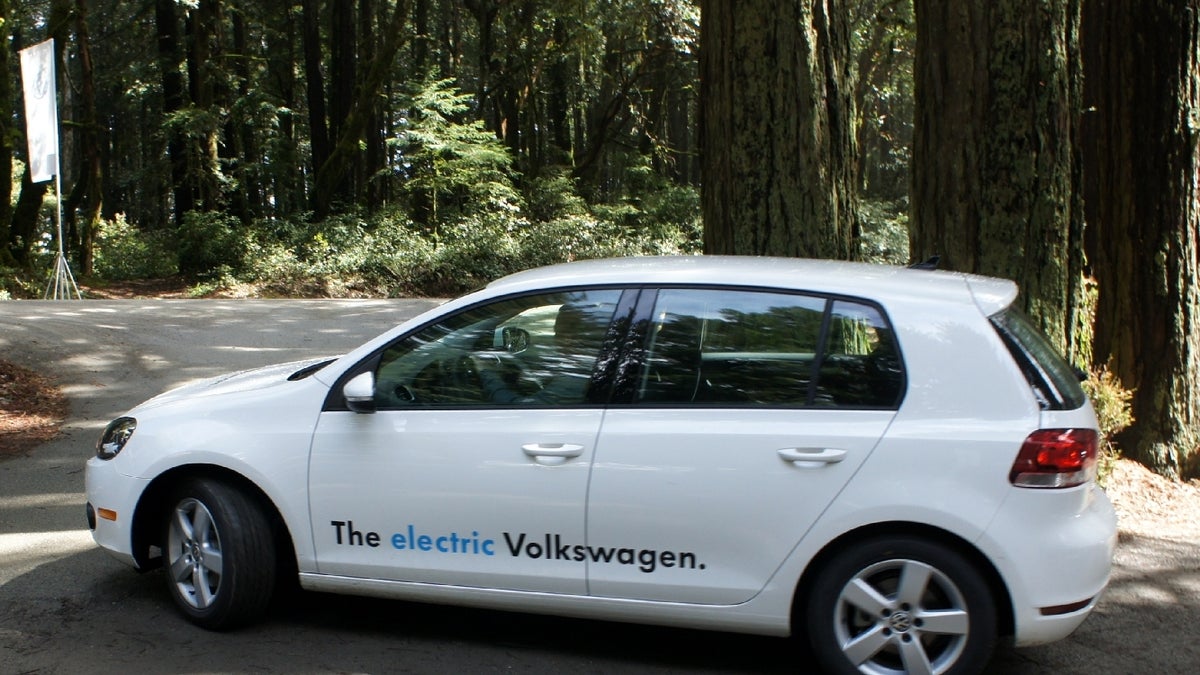First drive in the electric VW eGolf
Volkswagen began its 20 vehicle testing program for the eGolf, and let CNET editor Wayne Cunningham behind the wheel for a short drive.

During a day spent torture-testing Volkswagen performance models in the Santa Cruz mountains, I took a time out to drive the eGolf, the electrical vehicle based on the Golf hatchback. Volkswagen just kicked off a test program in the U.S. with 20 eGolfs spread around the country.
I got a look at the eGolf last month in Volkswagen's Electronics Research Laboratory (ERL). The car uses a 26.5 kilowatt-hour lithium-ion battery pack to give it an estimated 93 miles in range.
The cabin of the eGolf I drove resembled the standard Golf's in many ways, not surprising as these cars share everything except the driveline. But the instrument cluster swaps a power use gauge for the tachometer, and a smaller analog gauge shows the remaining range. That all-important number is repeated on a digital display.
Like other electric cars, the eGolf glided quietly forward. As the range display only showed 10 miles, I kept a light foot on the accelerator, so did not feel the full effect of its 199 pound-feet of torque driving the front wheels.
Mark Gillies, Volkswagen's product and technology manager, rode in the passenger seat, advising me on the eGolf's unique brake regeneration capabilities. On a downhill slope, I moved the shifter to the B position, which slowed the car substantially. It also delivers about 60 kilowatts of regeneration, according to Gillies.
Putting it back into drive and coming upon another down slope, Gillies advised me to hit the paddle shifter inscribed with a minus sign. Regeneration drag began to slow the wheels a bit, and a small, empty battery icon appeared on the instrument cluster.
Tapping the paddle shifter again produced more drag and a low level marker in the battery icon. I was able to tap the paddle two more times, bringing the regeneration level to maximum and filling up the battery icon. Likewise, hitting the plus paddle lifted each level of regeneration. It was a fine degree of control to give electric car drivers.
More surprising was how light the car felt. Volkswagen has not released the eGolf's curb weight, but I did not register the same kind of low-placed weight as in the Nissan Leaf or Chevrolet Volt. Instead, the car drove like it was similar in weight to the standard Golf.
Some of that perception may have had to do with the electric power steering, which was heavily boosted. Turning the wheel to very little effort.
As to that 10-mile range number, I would have thought Gillies would be more concerned, as it was a 17-mile drive to the ERL where the car was based, and where it could be recharged. But he blithely pointed out how more than half of that run was downhill. The car would probably end up with more range than when he started.
And that point made me realize the fungible nature of range in an electric car. Going downhill in a gas-engined car may make the trip computer's range go up, but you are still depleting the gasoline to some degree. The regeneration capabilities of electric cars mean you can restore much of the used energy, given the right topography.
Because of currently limited range, electric car drivers out of necessity will develop an understanding of their local topography superior to that of other drivers. These drivers will find the gentler grades for hill climbing and the best down slopes for regeneration. Whatever range the car indicates may not matter depending on the down or up slopes ahead.
Volkswagen has just begun testing the eGolf. The lessons learned from this program will go into the production model, planned for the end of 2014.

